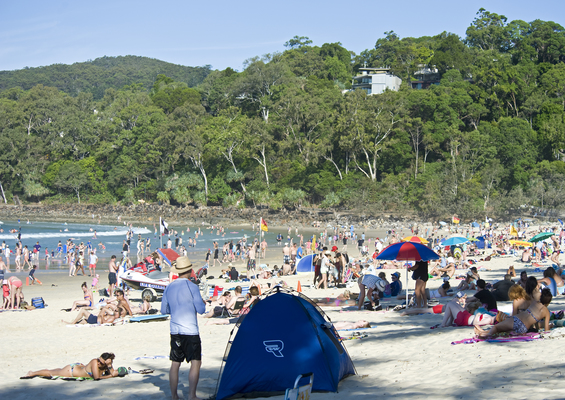
By Jolene Ogle
Mayor Tony Wellington has defended an elitist approach to traffic management saying, it’s not about keeping low-spend, day-visitors out, but more about getting the balance right.
In an interview with ABC radio on 1 February, Cr Wellington said the traffic chaos may be caused in part by the “day tripper”.
“The people who want to drive into Noosa for the day and want to drive out again expecting to get a park at near Main Beach or Hastings Street,” he said.
“Day trippers make up 60 per cent of those who visit Noosa, but in terms of their overall spend, it is only 15 per cent of the total.”
Cr Wellington said council wouldn’t erect gates to keep day trippers out, but the “emphasis has to be on the high-yield market” and council would consider “disincentives to the day tripper market”.
Cr Wellington has acknowledged there is “quite a bit of debate lately” regarding the nature and impact of visitors to Noosa Shire, with day trippers being a singular point of focus, and wants to now provide clarity regarding council’s approach to the matter.
“My fellow councillors and I are all in agreement that we want Noosa to be a thoroughly welcoming place, for residents and visitors alike,” he said.
“Overall, I think it’s fair to say that the vast majority of Noosa Shire residents are extremely tolerant of the impact imposed by tourists and large-scale events. Most seem to appreciate that tourism is far and away our largest economic sector. Research reveals it employs about 16,000 people.”
Cr Wellington said more than two million visitors injected over $940million into the local economy throughout 2016, but tourists do unwittingly put pressure on public infrastructure.
“We do need to find a workable balance between resident amenity and tourism attraction,” he said.
“There is certainly no point in demonising so-called day trippers. They will always be part of the visitor mix. Of course they also inject money into our economy, spending $155 million in Noosa last year.
“However, with increasing numbers of people expected to live in South East Queensland, the pressure to accommodate the drive-in day visitor will only increase, and that presents us with a range of problems.”
Cr Wellington said, it was no secret Tourism Noosa concentrated their marketing on the high-yield overnight visitors rather than the low-yield day visitor.
Statistics show the high-yield strategy is working with interstate visitors up 50 per cent and their spend up by 77 per cent to $470 million.
Cr Wellington said the success of Noosa’s tourism market lay in getting the balance just right.
“When does Noosa’s success actually start to become its undoing, as the visitor finds Noosa replicating the crowded big city they are often escaping?” he said.
“The Noosa ‘brand’ is premised on a relaxing, village-like and environmentally friendly atmosphere. What is the tipping point, where further increases in visitor numbers may have a detrimental impact on our tourism sector per se?
“All this plays into a range of decisions at council, most pointedly our upcoming transport strategy.”
Council will release the Draft Transport Strategy for comment at the March round of council meetings, and will also hold discussions with key stakeholder groups.
“The interesting thing about transport is that everyone supposes they have some expertise. But often the popular solutions are not as effective as many want to believe,” Cr Wellington said.
“I have said before that increasing parking does not reduce congestion – in fact it does the opposite by encouraging more cars. Experience and research elsewhere has also shown that making public transport free only decreases private car usage by 9 per cent. It is not the panacea that many would like to imagine.
“Thus, the final answer to this complex problem will involve a broad range of actions, not just one or two.”







